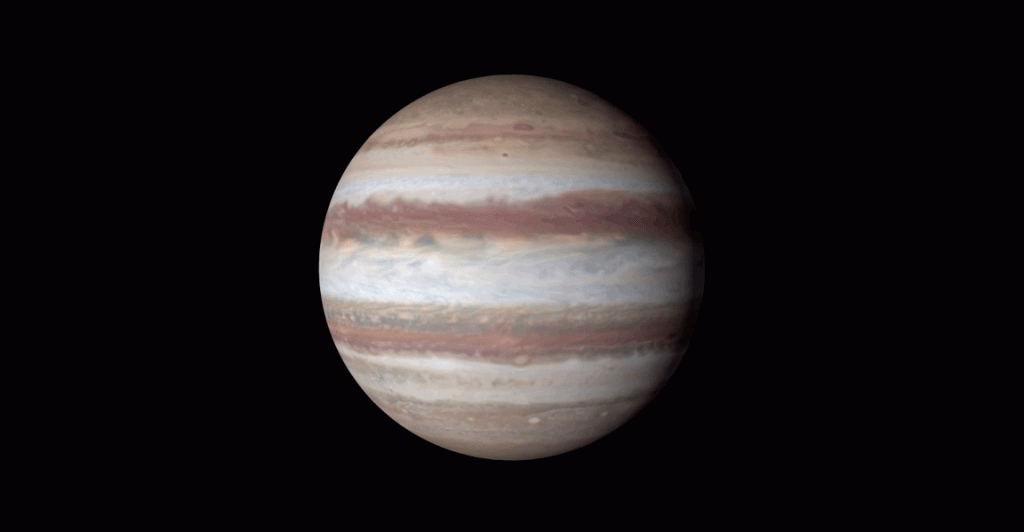Hubble Captures Stunning Jupiter Images, Revealing Changes In Great Red Spot
Another oddity has been spied just north of the planet’s equator – a wave-like structure has formed, something that hasn’t been seen since the Voyager 2 flyby in 1979.
Looking at the new maps scientists are able to confirm the storm in Jupiter’s Great Red Spot is shrinking faster than before, according to the NASA release.
High-resolution maps and spinning globes are the first products to come from the Hubble program, which is used to study the solar system’s outer planets.
These two maps provide full images of the planet Jupiter as captured by Hubble this year.
This new image from the largest planet in the Solar System made during the Outer Planet Atmospheres Legacy (OPAL) program.
The images were taken with Hubble’s Wide Field Planetary Camera 3, which was installed on Hubble during the telescope’s final servicing mission. Scientists also describe the storm as emitting more of an orange color, not red, while its core has faded in color over the past several years.
“Every time we look at Jupiter, we get tantalizing hints that something really exciting is going on”, says Amy Simon, a NASA planetary scientist with the agency’s Goddard Space Flight Center in Greenbelt, Maryland.
“This time is no exception”, she says. NASA suggests that the wave is “similar to a wave that sometimes occurs in Earth’s atmosphere when cyclones are forming”. The rare wave structure seen on the planet is believed to have originated in a clear layer beneath the clouds, and is likely only visible when it propagates up into the cloud deck.
NASA’s Voyager 2 spacecraft spotted the elusive wave once before, but that was decades ago. It’s a wonderful last hurrah for the Hubble Space Telescope, whose role will be soon usurped by the more powerful James Webb Space Telescope launching in 2018. Committing more time to these observations can help us better understand how these planets change over time.








